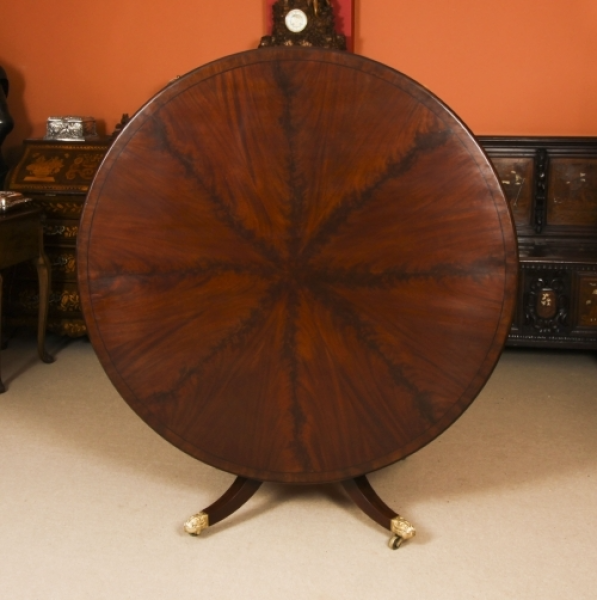Gillow & Co.
was originally founded in Lancaster in 1730. Gillow’s of Lancaster was a household name in Victorian Britain, and the firm exported furniture throughout the Empire. Key to the company’s success was the dynamic father and son team at its core.
The London branch was opened in 1775. Among Gillow’s most successful pieces during this period were those made in the Neoclassical style from original drawings by Robert Adam. In the period 1813-1820 the Gillow family gradually withdrew from personal involvement with the business.
In 1897 Gillow & Co. merged with a Liverpool firm and they henceforth traded as Waring & Gillow.
Flame Mahogany
Thomas Sheraton - 18th century furniture designer, once characterized mahogany as "best suited to furniture where strength is demanded as well as a wood that works up easily, has a beautiful figure and polishes so well that it is an ornament to any room in which it may be placed." Matching his words to his work, Sheraton designed much mahogany furniture. The qualities that impressed Sheraton are particularly evident in a distinctive pattern of wood called "flame mahogany."
The flame figure in the wood is revealed by slicing through the face of the branch at the point where it joins another element of the tree.
A Loo table
was a table adapted for a circle of persons playing the popular Victorian card game Loo. However, it is extremely versatile and can be placed in a dining room, bedroom, living room, office or reception.
William IV - the brief reign of William IV (1830 – 1837) marked a period of transition between the Regency period (which had been an age of innovation based on revivalist styles such as ancient Egypt, and the Grecian designs) and the Victorian era.
William IV furniture is similar in style to Regency furniture with many of the designs from the Regency period being copied but often executed in a much heavier manner with chairs, tables and other items being coarser and clumsier in appearance when compared with those made during the Regency period.
Popular pieces produced during this period include tilt top dining tables and pillared extendable tables. Sofa tables and drum tables were also favoured at the time as were sideboards and card tables. Heavy brass fittings were a prominent feature such as lion’s paw feet on tables. Chairs frequently sported sabre legs to the back with stumpy bulbous turned legs to the front. The rope twist carved back was also much in favour.
This period also saw the introduction of the more exotic timbers such as zebra wood. With the Industrial Revolution getting under way furniture making saw the increased use of mechanisation a trend set to accelerate during the Victorian period.
This short, but important transitional period eventually gave way to the romanticism of the Victorians but the furniture it produced was usually of good quality and it remains sought after and desirable today.






















